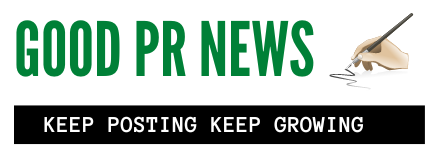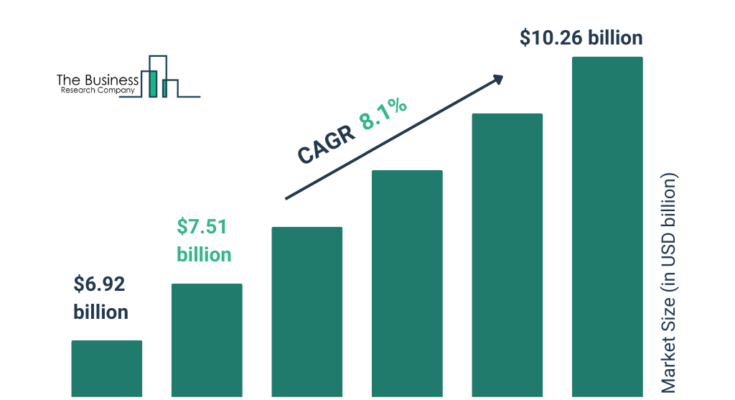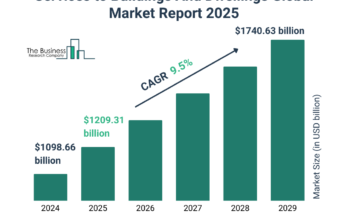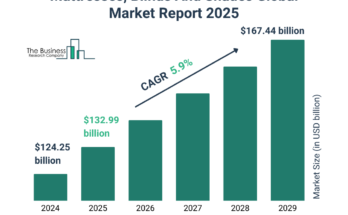At what pace is the pollen allergy market growing, and what is its estimated value?
The pollen allergy market size has grown strongly in recent years. It will grow from $6.92 billion in 2024 to $7.51 billion in 2025 at a compound annual growth rate (CAGR) of 8.5%. The growth in the historic period can be attributed to growth in awareness of allergic conditions, rise in investment in healthcare infrastructure, surge in climate change leading to longer pollen seasons, and rise in urbanization contributing to higher allergen exposure.
The pollen allergy market size is expected to see strong growth in the next few years. It will grow to $10.26 billion in 2029 at a compound annual growth rate (CAGR) of 8.1%. The growth in the forecast period can be attributed to increasing allergic conditions, rising pollution levels, rising climate change, growing awareness about allergy treatments, increasing availability of different treatment options, expanding healthcare access, and a increasing focus on preventive measures and environmental health. Major trends in the forecast period include development of more effective immunotherapy treatments, adoption of personalized allergy medications, innovations in pollen-blocking nasal filters, advancements in air purifiers with HEPA filters, improvements in nasal spray formulations, adoption of natural and organic allergy relief products, and advancements of wearable devices that monitor allergen exposure in real-time.
Get Your Free Sample of The Global Pollen Allergy Market Report:
https://www.thebusinessresearchcompany.com/sample.aspx?id=20930&type=smp
What are the top drivers to the rising demand in the pollen allergy market?
The prevalence of allergic rhinitis is expected to drive the growth of the pollen allergen market going forward. Allergic rhinitis is an allergic condition that inflames the nose, leading to sneezing, a blocked nose, and itchy eyes, usually caused by pollen or dust. The rise in allergic rhinitis is attributed to environmental pollution, climate change, urbanization, and lifestyle shifts, which increase exposure to allergens and pollutants. Allergic rhinitis is a common condition caused by pollen allergies, where exposure to pollen triggers inflammation in the nasal passages. For instance, in October 2023, according to the World Allergy Organization, a US-based umbrella organization for clinical allergic studies, allergic rhinitis impacts over 400 million people globally, with prevalence rates ranging from 10% to 30% in adults and exceeding 40% in children. Therefore, the rise in the prevalence of allergic rhinitis is driving the growth of the pollen allergen market.
How is the pollen allergy market segmented?
The pollen allergy market covered in this report is segmented –
1) By Product Type: Instruments, Consumables, Services
2) By Allergen Type: Food, Inhaled, Drug, Other Allergen Types
3) By Therapeutics Drug class: Antihistamines, Decongestants, Corticosteroids, Mast Cell Stabilizers, Leukotriene Inhibitors, Nasal Anticholinergics, Immunomodulators, Auto injectable Epinephrine, Immunotherapy
4) By End-User: Diagnostic Laboratories, Hospitals
Subsegments:
1) By Instruments: Allergy Testing Equipment, Diagnostic Devices, Monitoring Devices
2) By Consumables: Allergy Test Kits, Pollen Filters, Diagnostic Reagents, Treatment Medications (Antihistamines)
3) By Services: Allergy Testing Services, Immunotherapy Services, Consultation And Diagnostic Services
Order your report now for swift delivery
https://www.thebusinessresearchcompany.com/report/pollen-allergy-global-market-report
Who are the top competitors in the pollen allergy market?
Major companies operating in the pollen allergy market are Johnson & Johnson, F. Hoffmann-La Roche Ltd., Merck KGaA, AbbVie Inc., Bayer AG, Sanofi SA, AstraZeneca Plc, Novartis AG, GlaxoSmithKline PLC, Astellas Pharma Inc., Bausch Health Companies Inc., Sun Pharmaceutical Industries Ltd, Genentech Inc., Omega Pharma, ALK Abello, Stallergenes Greer, Aimmune Therapeutics, Allergy Therapeutics, McNeil Consumer Healthcare, Meda Pharmaceuticals Inc, HAL Allergy Group, Allergopharma, Biomay AG, Leti Pharma, Epigenomics AG, Alerpharma S.A
What major trends will shape the pollen allergy market during the forecast period?
Major companies operating in the pollen allergy market are focusing on developing comprehensive allergy care platforms to provide integrated solutions for diagnosis, treatment, and management of allergies, ensuring improved patient outcomes and convenience. A comprehensive allergy care platform for pollen allergy refers to an integrated system or service that provides end-to-end support for individuals suffering from pollen allergies. For instance, in February 2023, Nectar Life Sciences, an India-based pharmaceutical company, launched Nectar, a comprehensive allergy care platform, introducing personalized sublingual immunotherapy drops as its first product. Nectar allergy drops, custom-formulated based on a CLIA-certified at-home allergy test, target the root cause of allergies, offering a convenient and effective alternative to traditional shots and antihistamines. The program simplifies allergy treatment with direct-to-home shipments and ongoing prescriptions every three months, enabling patients with moderate to severe allergies to build long-term tolerance and reduce symptoms over time. This innovative approach aims to revolutionize allergy care by combining personalization, convenience, and proven efficacy.
Which regional trends are influencing the pollen allergy market, and which area dominates the industry?
North America was the largest region in the pollen allergy market in 2024.Asia-Pacific is expected to be the fastest-growing region in the forecast period. The regions covered in the pollen allergy market report are Asia-Pacific, Western Europe, Eastern Europe, North America, South America, Middle East, Africa.
What Does The Pollen Allergy Market Report 2025 Offer?
The pollen allergy market research report from The Business Research Company offers global market size, growth rate, regional shares, competitor analysis, detailed segments, trends, and opportunities.
Pollen allergy is an allergic reaction to pollen from trees, grasses, and weeds. It occurs when the immune system mistakenly identifies pollen as harmful and releases chemicals such as histamine to combat it. Pollen allergies are often seasonal, peaking during spring, summer, or fall, depending on the pollen an individual is sensitive to.
Purchase the exclusive report now to unlock valuable market insights:
https://www.thebusinessresearchcompany.com/purchaseoptions.aspx?id=20930
With over 15000+ reports from 27 industries covering 60+ geographies, The Business Research Company has built a reputation for offering comprehensive, data-rich research and insights. Armed with 1,500,000 datasets, the optimistic contribution of in-depth secondary research, and unique insights from industry leaders, you can get the information you need to stay ahead.
Our flagship product, the Global Market Model, is a premier market intelligence platform delivering comprehensive and updated forecasts to support informed decision-making.
Contact Us:
The Business Research Company
Europe: +44 207 1930 708
Asia: +91 88972 63534
Americas: +1 315 623 0293
Email: info@tbrc.info
Follow Us On:
LinkedIn: https://in.linkedin.com/company/the-business-research-company
Twitter: https://twitter.com/tbrc_info
Facebook: https://www.facebook.com/TheBusinessResearchCompany
YouTube: https://www.youtube.com/channel/UC24_fI0rV8cR5DxlCpgmyFQ
Blog: https://blog.tbrc.info/
Healthcare Blog: https://healthcareresearchreports.com/
Global Market Model: https://www.thebusinessresearchcompany.com/global-market-model




